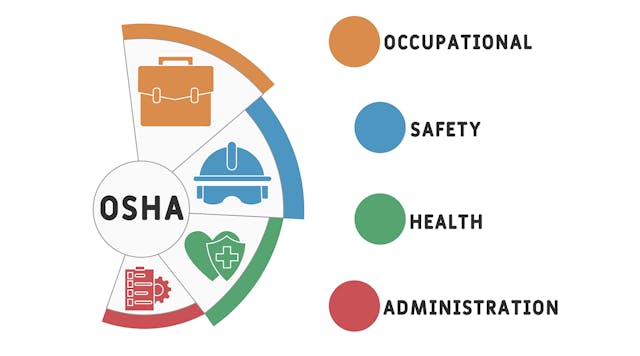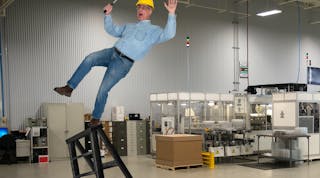You recently deployed a training course on slips, trips and falls. Everyone took the training and now you can “check the box,” so to speak, and say to OSHA that your company is working to prevent future falls. But, did your employees’ behavior actually change, and did you really reduce the number of falls?
It can be a difficult bridge to build: training someone AND creating behavior change. It’s that bridge that can solidify a strong safety culture. Here are three basic learning principles that can help you build a safety culture infused with positive behavior change.
1. Know Your Employees and How They Learn
Knowing your employees will help you determine how to engage and effect change in them. For example, if your employees read at a first-grade level, would a crane rigging course that uses eighth-grade level language be effective? Not likely.
Ask yourself these questions:
- What is the average reading level of your employees?
- Would your employees benefit from video or in-person training courses versus reading a document?
- Should you use courses that are available in languages other than English?
- Are your employees well-informed or more experienced on the topic, or are they new to the ideas?
- How do your employees learn? Are you covering the bases by mixing audio, visual and kinesthetic (experience by doing) content?
Understanding your employees will inform your approach and strategy for teaching them. A course that is designed for new or inexperienced employees won’t be engaging or applicable for a more advanced or tenured employee. However, having that senior employee engage with newer employees may work well for both parties.
Another option is to moderate a safety discussion to foster organic mentoring and learning opportunities. This is a type of learning style, called blended learning, that incorporates another training best practice: real-world examples and application.
In some cases, it might help to use blended learning where you combine an e-learning, or e-training, course with another training method.
If we go back to the slips, trips and falls example, when your employees took the online training course, they received general, or initial, knowledge on the topic. Blended learning takes that general knowledge and uses additional methods to foster behavioral change that will stick.
After acquiring general information from an online course, consider having your employees practice what they learned and talk about what they’ve learned. Perhaps the on-site instructor could have employees show where caution signs are kept at the facility or where the facility has potential areas that might require extra caution. Another idea would be to assess or test employees’ knowledge. Here, the on-site instructor might stage different examples that employees should come in and fix.
2. Utilize Real-Life Examples that People Can Relate To
Think about how often you Google something: you’re Googling because you need information and you need it immediately. Adults are most interested in learning either when it’s a skill that directly applies to them, or if it’s a problem that they’re facing right now.
The same goes for training. Consider real scenarios your employees encounter when you’re choosing a training course or talking to them in person. Ask them questions like, “What should you do when you see a wire cutting across a pathway?” Or, if you see an example in real-time, can you turn it into a teachable moment?
3. Repetition of Behavior is the Only Way to Ingrain Change
Repetition is the first principle of learning. You need to turn knowledge or behavior from a person’s conscious mind to their subconscious mind. There are many studies that have assessed how often a person needs to hear or see something before they can easily recall it. The answer will vary from person to person, but usually it’s around seven different times. As a result, it’s best to repeat your training and be careful how much time lapses between trainings.
If you conduct annual training courses on slips, trips and falls without follow-up between the courses, it will be more difficult for you to change and monitor your employees’ behavior. Think about what you can do throughout the year, in-between your annual training. Would sporadic, announced site visits that allow workers time to prepare be helpful? Or would a pop quiz work? The more you can engage your employees and repeat the key principles of your training, the more likely your employees will be to change their behavior.
Knowing your employees, how to engage them with real-world examples, and repeating the lessons learned are three basic principles to take your safety practices from just an annual “check the box” to actually creating conscious and subconscious employee behavioral change and building a safer workplace culture.
Brent Daviau, CPTM, is training content developer at KPA (www.kpaonline.com), a provider of software as a service (SaaS) solutions for compliance and workforce management.















































































